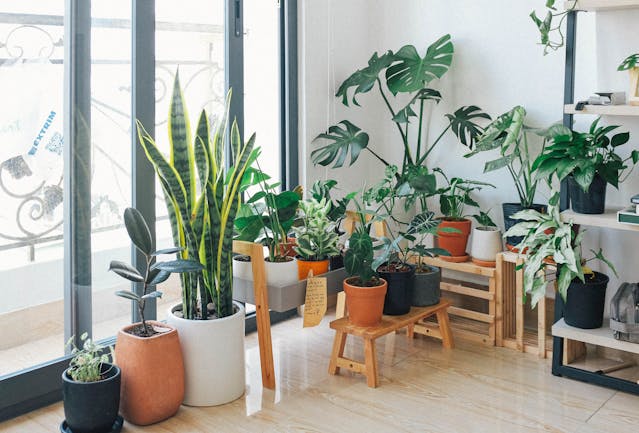Indoor plants require different care throughout the year to thrive in changing seasons. Here, we’ll explore how to adjust your care routines to keep your indoor greenery healthy year-round.
Understanding Seasonal Changes
Seasonal variations in temperature, humidity, and daylight significantly influence indoor plants’ health and growth. By closely observing these changes, you can adapt care routines to provide optimal conditions, fostering resilience and ensuring thriving greenery year-round.
Understanding Plant Needs
The first step in providing proper care for your indoor plants throughout the year is understanding how different seasons affect them. Indoor plants are not exposed to the elements in the same way outdoor plants are, but they still experience changes in light, temperature, and humidity that can impact their health.
Adapting Care Routines
Winter: Combat low humidity and shorter daylight with increased humidity, supplemental lighting, and reduced watering.
Spring: Support renewed growth by gradually increasing watering, monitoring for pests, and repotting if needed.
Summer: Prevent heat stress with indirect sunlight, more frequent watering, and regular pruning.
Autumn: Prepare for dormancy by reducing watering, monitoring temperatures, and adjusting fertilisation.
Adjusting care routines to meet seasonal needs ensures your indoor plants thrive year-round. By paying attention to seasonal changes and making necessary adjustments, you’ll enjoy healthy, vibrant greenery in every season!
Spring Care
Adjusting Watering Habits Spring marks a period of growth for many indoor plants, necessitating increased watering. However, it’s crucial to adjust gradually and avoid overwatering, which can lead to root rot.
Repotting and Fertilising This is the ideal time to repot if necessary, providing fresh soil and more room for roots to grow. Start fertilising again, but do so lightly at first to avoid shocking the plants.
Pruning and Cleaning Remove any dead or dying foliage to allow new growth to flourish. Wiping down leaves can improve photosynthesis efficiency, making for happier plants.
Summer Care
Managing Temperature and Humidity Indoor plants can suffer if the temperature gets too high or if the air is too dry. Consider using a humidifier and keeping your plants away from direct air conditioning drafts.
Pest Prevention Pests are more active in summer. Regularly inspect your plants and take immediate action if you spot signs of infestation.
Watering Adjustments Some plants may require more frequent watering in summer, but always check the soil moisture level before watering to avoid overdoing it.
Autumn Care
Preparing for Less Light As daylight hours decrease, consider moving your plants to spots where they’ll receive more light or using artificial lights.
Reducing Water and Fertiliser Begin to reduce watering frequency and stop fertilising as plants enter a slower growth phase.
Pest Inspection A final pest check before winter can help prevent indoor infestations during the colder months.
Winter Care
Light Maximisation Make the most of available light by placing plants in well-lit areas and cleaning windows to allow more sunlight to penetrate.
Humidity Control Heating systems can dry out the air, so using humidifiers or pebble trays can help maintain adequate humidity levels.
Watering Reductions Water less frequently in winter, as lower light levels and cooler temperatures slow plant growth and reduce water needs.
Special Tips for Plant Parents
Monitoring Plant Health Keep a close eye on your plants for any signs of stress or disease, adjusting care routines as necessary.
Seasonal Repotting Guide Only repot when necessary, typically in the spring, to avoid stressing plants during dormant periods.
Conclusion
Caring for indoor plants is a rewarding activity that brings beauty and life into your home. By understanding and adapting to the seasonal needs of your plants, you can ensure they remain healthy and vibrant throughout the year. Remember, the key is observation and adjustment.
FAQs
Water less frequently, only when the top inch of soil is dry.
Yes, artificial lights can supplement natural light during shorter days.
Use a humidifier, place plants on a pebble tray with water, or group plants together.
Spring, when plants are entering their growth phase.
No, it’s best to pause fertilizing in winter when plant growth slows down.



































